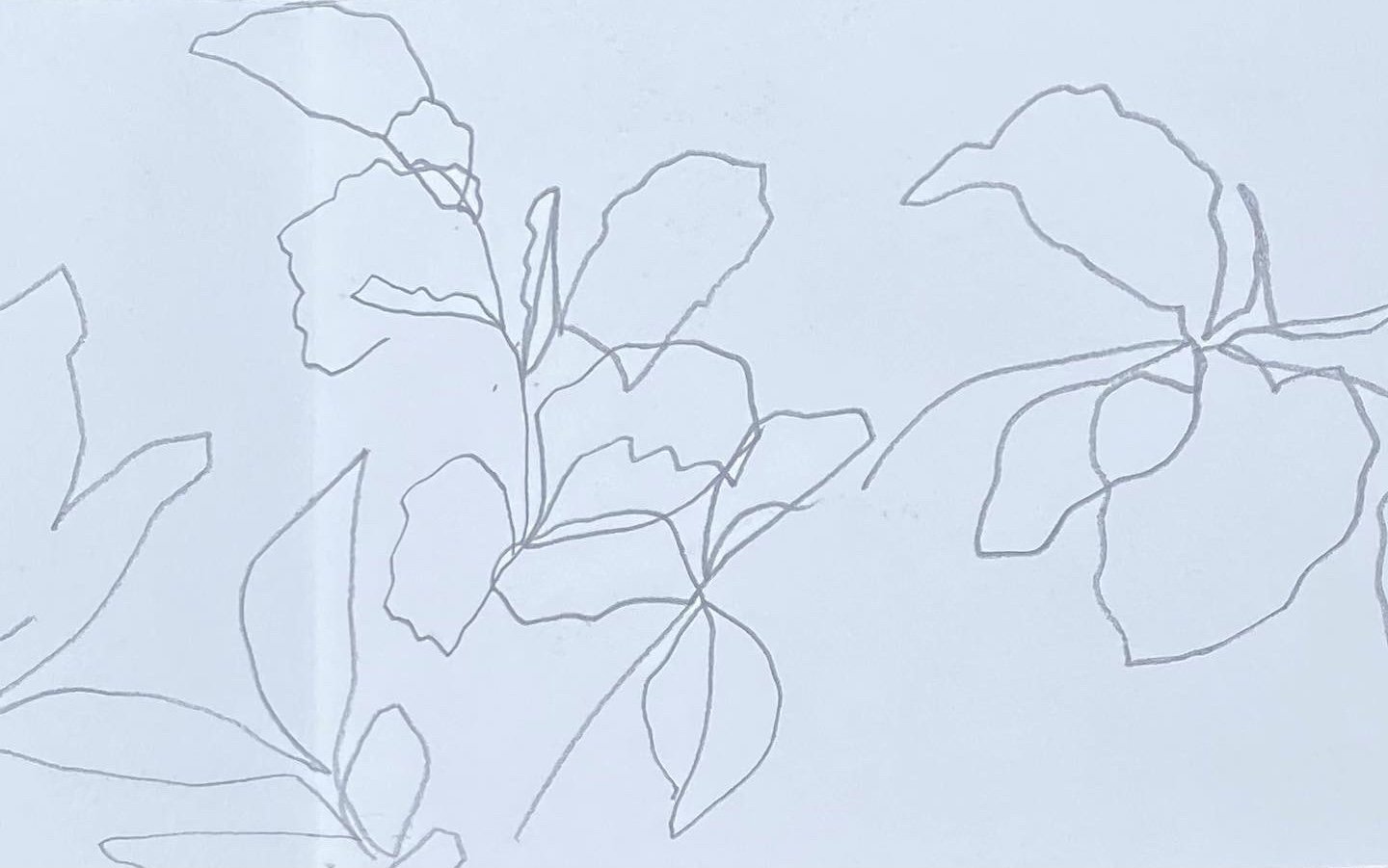The Importance of Drawing
Blind contour pencil drawing
I have always made drawings as part of my art practice but often it has felt like something I ‘should’ do rather than something that I wanted to do. I think drawing, of some form, is an integral part of making art. Drawing requires keen observation of your subject which can only be a good thing when it comes to making artwork inspired by it. There is something very special about this concentrated observation of the subject; I always feel that I know my subject better for having drawn it. This doesn’t necessarily mean that I sit for hours examining every detail of my subject. The amount of time I spend drawing depends on what information it is that I wish to record. After all, this is the point of drawing, to make a record of something that interests me, and if I can do that in five minutes then I don’t need to labour in vain for twenty! A quick two minute drawing can easily tell me all I need to know about outlines and shapes. However if I want to collect more information, regarding the texture or markings on the surface of a leaf, then I will probably spend a bit longer on my drawing and make a more detailed study.
In the last couple of months I have discovered a love of drawing that I had only briefly felt before, when I was studying on my degree course. At the moment, I enjoy exploring the shapes and textures of the plants I encounter using simple pencil or ink drawings on paper. I try to keep my drawings quick and instinctive so as not to overthink them. It is the shapes and the quality of the lines that I am interested in.
Blind contour drawing in handmade sketchbook
My favourite technique at the moment is blind contour drawing. This is a drawing process that requires me to concentrate my eyes on the subject in front of me and draw what I see without looking down at my paper as I draw.
I like the way in which this technique asks me to let go of perfectionism and a desired outcome. I am prone to overthinking my art making and, whilst I do need to think about what I am doing to a certain extent, it can zap the joy out of the process for me if I get too bogged down in detail. With my blind contour drawings I have to allow my drawings to happen and let go of judgement. There is no pressure to make a ‘pretty’ drawing. Often, I am pleased with the outcome; I am able to capture movement and interesting shape in my drawings, which I like. There is also a lot of scope for working with my blind contour drawings afterwards. I can transfer them onto thermofax silk screens and experiment with layering them up using a combination of printmaking and embroidery. I can work into them further in my sketchbook using paint or collage. I can isolate shapes from my drawings and use them as a basis for embroidered outlines using couching or stem stitch. There are a lot of options open to me.
Blind contour drawing of olive tree in the garden
Drawing has become an essential part of my art making process. I try to make at least one blind contour drawing every day; to keep me practicing my drawing and as a kind of meditation. Focussing my attention on a plant and drawing it, even if only for a couple of minutes, clears my mind in the same way as counting my breaths or listening to meditative music. Sometimes I will go out into the garden, set myself up with my sketchbooks and pencils, and draw the plants outside and other times I will stay indoors and draw my houseplants or some cut flowers. Either way, I try to make time for drawing every day.


